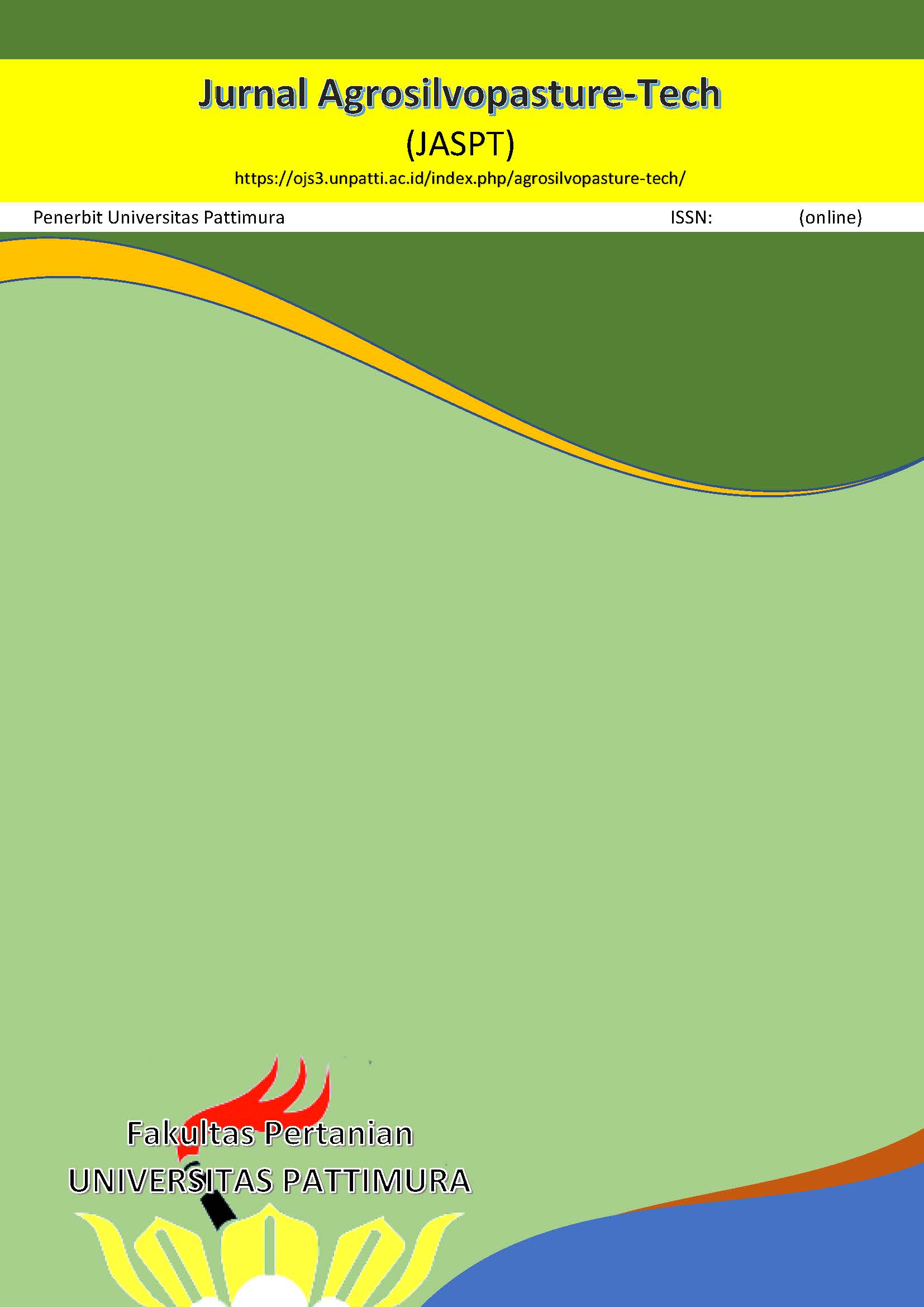Macroscopic mushroom exploration in Leihitu Barat district west of Ambon Island
Abstract
Macroscopic mushrooms are mushrooms that have fruiting bodies. They live (heterotrophically). In addition, fungi are eukaryotic organisms, spores, do not have chlorophyll, and reproduce sexually and asexually. The aims of the research are (1) to find types of macroscopic fungi. (2) describe the dominant habitat types of the mushroom populations found. The research was carried out in West Leihitu District, namely the villages of Wakasihu and Larike from July to October 2022. The mushrooms were obtained by roaming methods on transect lines. Data collection included the habitat of the fungus, namely live wood, dead wood, soil, and leaf litter. Identification in the laboratory to determine the type of fungus. The data obtained were analyzed qualitatively and quantitatively. The results of the study obtained 16 species with 6 different species and 5 of the same species. In both villages, there are 8 species from the Basidiomycota division and 3 species from the Ascomycota division and consist of 8 families. The mushroom habitats found in both villages were: 7 species of dead wood, 3 species of soil, and 1 species of leaf litter. The frequency of the presence of the fungus is range between 7.8% to 10.2%.
Downloads
References
Alexopoulus, C.J. & Benneke, E.S. (1962). Introductory Mycologi. America: Burgess Publishing Company.
Das. (2010). Diversity and conservation of wild mushrooms in Sikkim with special reference to Barsey Rhododendron Sanctuary. NeBio, 1(2), 1-13.
Darwis, W., Desnalianif, & Supriati, R. (2014). Inventarisasi jamur yang dapat di konsumsi dan beracun yang terdapat di hutan dan sekitar Desa Tanjung Kemuning Kaur Bengkulu. Jurnal Ilmiah, 7(2).
Desjardin, D.E., Wood, M.G., & Stevens, F.A. (2014). California Mushrooms the Comprehensive Identification Guide. Timber Press. Portland-london.
Dighton, J. and White, J.F. (Eds). (2017). The Fungal Community: Its Organization and Role In The Ecosystem. Edisi ke-4. CRC Press. Florida.
Hibbett, D.S., Binder, M., Bischoff, J.F., Blackwell, M., Cannon, P.F., Eriksson, O.E., Huhndorf, S., James, T., Kirk, P.M., Lücking, R. et al. (2007). A higher-level phylogenetic classification of the fungi. Mycological Research, 111, 509-547. https://doi.org/10.1016/j.mycres. 2007.03.004.
Huffman, D. M., Tiffany L.H., Knaphus G., & Healy, R.A. (2008). Mushrooms and Other Fungi of the midcontinental United States. University of lowa Press. Lowa City.
Kuo, M. & Methven, A. S. (2014). Mushrooms of the Midwest. Universitas of Illinois Press, Chicago.
McKnight, K.H. dan Vera B.M. 1987. Mushrooms. New York: Houghton Mifflin Company
Mossebo, D. C., Metsebing, B. P., Oba, R., Tsigaing, F. T., Ryvarden, L., Fonkui, T. Y., ... & Ndinteh, D. T. (2020). Comparative evaluation of antifungal and antibacterial activities of crude extracts of Pleurotus sajor-caju, Pleurotus tuber-regium and Lentinus squarrosulus (Basidiomycota, Pleurotaceae, Lentinaceae) from Cameroon. European Journal of Biology and Biotechnology, 1(5).
Munir, E. 2006. Pemanfaatan Mikroba dalam Bioremediasi: Suatu Teknologi Alternatif untuk Pelestarian Lingkungan. Pidato Pengukuhan Jabatan Guru Besar Tetap dalam Bidang Mikrobiologi FMIPA USU. USU Repository. Medan.
Nasution, F., Prastyaningsih, S. R., & Ikhwan, M. (2018). identifikasi jenis dan habitat jamur makroskopis di hutan larangan adat Rumbio Kabupaten Kampar Provinsi Riau. Wahana Forestra: Jurnal Kehutanan, 13(1), 64-76.
Norfajrina, N., Istiqamah, I., & Indriyani, S. (2021). Jenis-jenis jamur (fungi) makroskopis di desa Bandar Raya Kecamatan Tamban Catur. Al Kawnu: Science and Local Wisdom Journal, 1(1).
Retnowati, A., & Susan, D. (2017). Catatan beberapa jamur makro dari Pulau Enggano: Diversitas dan potensinya. Berita Biologi, 16(3), 227732.
Smith, A.H. dan E.E. Morse. 1979. The marga Pleurotus in the western United States. W.M.C. Brown Company Publisher Dubuqui. Iowa.
Syafrizal, S. 2014. Inventarisasi Jamur Makroskopis Di Hutan Adat Kantuk dan Implementasinya dFalam Pembuatan Flipbook. [Skripsi]. Pontianak. Program Studi Pendidikan Biologi Jurusan Pmipa. Universitas Tanjungpura.
Tampubolon, S., Utomo, B., Yunasfi. 2012. Keanekaragaman Jamur Makroskopis di Hutan Pendidikan Universitas Sumatera Utara Desa Tongkoh Kabupaten Karo Sumatera Utara. Program Studi Kehutanan, Fakultas Pertanian, Universitas Sumatera Utara.
Copyright (c) 2023 The Author(s)

This work is licensed under a Creative Commons Attribution-ShareAlike 4.0 International License.




.png)

